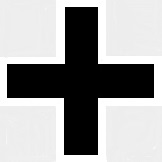Corgi AA38301 German Fokker Dr.1 Triplane Fighter - Josef Carl Peter Jacobs, Jasta 7, 1918 (1:48 Scale)
"When you march into France, let the last man on the right brush the Channel with his sleeve."
- General Alfred von Schlieffen, referring to the Schlieffen Plan just prior to his death in 1913
 The Fokker Dr.I Dreidecker (triplane) was a World War I fighter aircraft built by the company of Anthony Fokker, and designed by Reinhold Platz. It became most famous as the plane of the Red Baron, Manfred von Richthofen.
The Fokker Dr.I Dreidecker (triplane) was a World War I fighter aircraft built by the company of Anthony Fokker, and designed by Reinhold Platz. It became most famous as the plane of the Red Baron, Manfred von Richthofen.
In April 1917, the Royal Naval Air Service (RNAS) introduced the Sopwith Triplane. Their debut was sensational and they swiftly proved to be superior to the Albatros and Halberstadt scouts then in use by the German Air Service. Soon the German pilots were clamouring for a triplane of their own. The majority of the German aircraft manufacturers, including Pfalz, AEG, DFW, Schütte-Lanz, and Euler, responded with new triplane designs. Most displayed little promise, though limited production of the Pfalz Dr. I was undertaken.
Fokker responded with the V.3, a small rotary-powered triplane with a tubular steel frame fuselage and thick cantilever wings. Fokker found several deficiencies in the V.3, particularly regarding control forces. Instead of submitting the V.3 for a type test, Fokker produced a revised prototype designated V.4. The most notable changes were horn-balanced ailerons and elevators, as well as wings of increased span. The V.4 also featured interplane struts, which were not necessary from a structural standpoint, but which had the effect of minimizing wing flexing. The V.4 proved highly manueverable and much superior to the triplane prototypes submitted by other manufacturers. The rudder and elevator controls were powerful and light. Rapid turns were facilitated by the triplane's directional instability. The ailerons were also light, but not very effective.
After a type test, an immediate production order ensued. The V.4 prototype was intentionally destroyed in static structural tests. The two pre-production examples, designated F.I, were delivered in the middle of August 1917. These were the only machines to receive the F.I designation. Delivery of production machines, designated Dr.I, commenced in October of that year.
Pictured here is a 1:48 scale replica of a German Fokker Dr.1 triplane fighter piloted by Josef Carl Peter Jacobs.
Sold Out!
Dimensions:
Length: 6-inches
Wingspan: 7-1/2-inches
Release Date: February 2009
Historical Account: "Aces High" - Born on May 15th, 1894, Josef Carl Peter Jacobs was the joint 4th German flying ace with 48 victories (equal with Lt. Werner Voss) during the First World War.
Josef Jacobs was born in Kreuzkapelle, Rhineland, German Empire, and joined flight school in 1912, aged 18, due to an interest in aviation. When war broke out, he joined up for the Imperial German Army Air Service to train as a pilot; whereby he was posted to FEA 9.
After completing training, Jacobs was posted to FA 11 (a reconnaissance squadron) for a year, flying long-range sorties over allied lines. His first victory over a French Caudron occurred in February 1916, however, it was unconfirmed, due to lack of independent witnesses. He then transferred to Fokker Staffel West (FSW), to fly Fokker E.III (Eindekker) and finally achieved his first official victory, either over an enemy balloon or aircraft. He achieved his 2nd victory (this time over a Caudron R4) in January 1917, before transferring to Jasta 22, then under the command of Erich Honemanns, who was a personal friend. He achieved 3 officially claimed and many more unclaimed victories whilst at Jasta 22, where he remained until August 1917, when he transferred to Jasta 7 as its commander.
Leutnant Jacobs went on to fly Fokker Dr. I Triplane rather successfully in Jasta 7 from early 1918 onwards and had his aircraft finished in a distinctive black scheme. The Dr. I was his favourite mount and he used its manouevrebility to his advantage.
Lt. Jacobs' victory tally slowly rose, until at 24 victories (achieved on July 19th, 1918) he was awarded the coveted Pour le Mérite. Jacobs would remain with Jasta 7 until armistice; his final victory tally was 48 enemy aircraft and balloons. Jacobs continued to fight against the Bolshevik forces in the Baltic, in 1919, with Kommando Sachsenberg.
After the war, he briefly became a flying instructor in the Turkish Army, before completely withdrawing from military activity. He founded his own company in the 1930s and when the NSDAP came into power, he refused to join the Luftwaffe after being asked by Hermann Göring. Jacobs then moved to Holland during World War II so he could go into hiding, to avoid accusations of desertion.
Jacobs died in Munich, Bavaria, Germany, in 1978.


